The Best Guitar Cables 2024 - Straight, Angled & Untangled
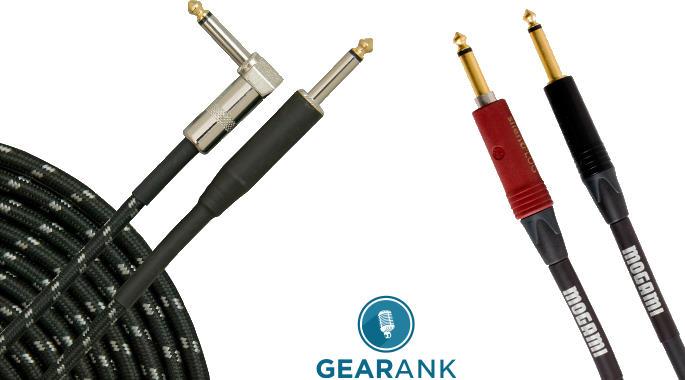
Author & Contributors
Alexander Briones
I have been writing about and researching music gear for many years, all while serving as a music director at my local church. I engage in guitar playing and singer-songwriter stints, in addition to mentoring young musicians and teaching guitar and bass.
Straight to Straight
Mogami Gold Instrument Cable - 10'
Cons
- Requires a substantial investment
- Cable is a bit stiff
Pros
- Noticeable jump in clarity
- High resistance to interference
- Low handling noise, even when using tube amps
- Premium build quality
Mogami is known for offering some of the best guitar cables on the market. And in particular, the Mogami Gold cable is among the best instrument cables that they offer.
This guitar cable features a high quality oxygen-free copper core designed to be as transparent sounding as a cable can. There's a noticeable jump in clarity when using this cable, which translates to more accurate playing and better overall tone.
For noise protection, the Mogami gold series guitar cable line features high-density copper spiral shielding with 100% coverage. This is supported by a conductive polymer sub shield. It also utilizes carbon-impregnated PVC, completing its dual shielding, which helps reduce handling noise and other unwanted noise.
All these premium features result in interference free, quiet operation, ready to take on the busiest stages and recording studios. When paired with a good Noise Gate, your guitar will even have fewer unwanted sound artifacts.

Mogami cable components
Speaking of premium, Mogami Gold cables require a substantial investment that goes beyond the usual budget for cables. And given its improved shielding, the cable is a bit stiff and not as flexible as regular ones.
The higher the price, the higher the expectations, but Mogami stands by their cables enough to offer a no-excuses lifetime warranty. If you want the best buy guitar cable with the highest-rated option, then get the Mogami Gold Instrument straight cable.
Specifications
- 20 AWG OFC Conductor
- Spiral Shielding
- Conductive Polymer Sub-Shield
- Available Lengths: 6' | 10' | 18' | 25'
| Website | Source | *Rating Value |
| YouTube | The Desire Company | 97/100 |
GLS Audio Tweed Guitar Cable 15'
Cons
- Average shielding
Pros
- Vintage style tweed cloth wrap
- Easy access to solder joints
- Balance of value and quality
- A reliable cable, especially when properly stored (coiled-up)
GLS Audio started out as a guitar amplifier builder in the mid '60s, now they are known for affordably priced guitar cables and accessories. The Tweed guitar cable that they produce continues to get high ratings with its balance of high quality construction and affordability.
This cable comes with double insulator shields (OFC insulator and PVC conductive shields) and oxygen free copper all wrapped in braided tweed cloth jacket, which is quite good for the price. Unfortunately, shielding specs are not provided, so while it works great for home use or small stages, it may not offer enough shielding in areas with higher interference.
Thanks to its cloth tweed wrap, this guitar cable looks more premium than it actually is and fits really well with older amps. This soft yet sturdy exterior does a good job of protecting the innards, and makes the cable easy to twist and store. It also helps prevent issues like cable kinking and breaking.
And it's not just skin deep because everything about the cable is solid and well-built, including the plug and the soldering joints. Speaking of soldering joints, this guitar cable allows for easy access to the joints, which makes them easier to check and maintain.
While the original soldering work is good, it will give out - sooner or later, depending on how you take care of the cable. Thankfully, resoldering is quick and painless.
With its great balance of quality, value, and old-school looks, you won't be disappointed with this highly-rated guitar cable.
Specifications
Fender Professional Series Cable Straight to Straight
Cons
- Cable is quite heavy
- A bit rugged and can get easily tangled
Pros
- Quiet operation
- Heavy duty yet flexible PVC jacket (sturdier than most cheaper cables)
- Reliable plugs with sealed soldering joints
- No kinking or twisting
Fender is one of the biggest brands when it comes to guitars, amps, and related accessories, so it's not surprising to find the brand doing well in the guitar cable market.
The Fender Professional Series cable does not stray from the tried and tested path, with a 22 AWG wire protected by 95% OFC spiral shielding. This ensures road-worthy, quiet operation free from worries of interference.
A sturdy 8mm outer wire jacket PVC jacket protects all that from the elements. It feels solid to the touch but has good flexibility, which helps prevent cable twisting and kinking. The downside to its thick PVC jacket is that it is relatively bulky and heavy.
Both ends feature nickel-plated connectors that work properly for a long time, thanks to sealed soldering joints.
With its big brand backing, the Fender Professional Series cable is worth looking at, especially when reliability is your top concern.
Specifications
Straight to Right Angle
Boss BIC-10A - 10'
Cons
- Not user serviceable
- Sealed plugs
- Easily gets tangled
Pros
- Tough exterior
- Clear and defined sound
- Quiet operation
- High-quality plugs and build quality, comparable to more expensive brands
Boss is well known for their tank-tough pedals, and as expected, the same passion for durability and reliability is found in the current Boss instrument cable offerings. The highest rated is the BIC-10A, the current best guitar cord (angled).
To meet the company's standard for toughness, the main "multi-strand" conductor is protected by a woven outer jacket (braided copper shielding) with an interior PVC jacket. This combination results in durability that can withstand the rigors of aggressive stage performances.

Interior and outer jacket
It's tough exterior is supplemented by braided OFC shielding with 95% coverage and polyethylene insulator. The shielding and insulator keep the guitar cable quiet, even in locations where there are higher-than-average interferences.
The cable's quiet operation works well with its multi-strand conductor, resulting in a clear sound that noticeably has more definition compared to the average cheap cable.
Having a multi-strand conductor and molded jacks means that repairing and modifying this guitar cable will not be easy. Thankfully, Boss believes in the durability of this guitar cable so much that they back it up with a lifetime guarantee.
If you're looking for a no-nonsense guitar cable that lasts a lifetime, check out the Boss BIC-10A.
Specifications
- Multi-strand OFC conductor
- High density braided shielding
- Woven Cable Jacket
- Available Lengths: 5' | 10' | 15' | 20'
Mogami Gold Right Angle 10'
Cons
- Steep price for an instrument cable
- Cable is a bit stiff
Pros
- More dynamics from your instrument
- Clear sound
- Eliminate buzzes, clicks, pops and crackles
- Lifetime warranty
The Mogami's Gold Series' right-angled guitar cable is also received by those who invested on them. Similar to the straight plug version, it is currently among the best instrument cables in the market. It features a high-quality oxygen-free copper core, which allows for clarity, which translates to more accurate playing, and a better overall tone.
Mogami chose 100% coverage of high-density copper spiral shielding to provide noise protection. Conductive polymer sub-shielding reinforces this, additionally, carbon-impregnated PVC is used to lessen handling noise.
With all of these high-end features, it operates quietly and interference-free, making it suitable for use in recording studios and the busiest stages. You won't have to worry about unwanted sound artifacts with this cable, especially when used in conjunction with a high-quality noise gate.
The main downside is its price, which is a lot more than what you would typically pay for a cable. It is also less flexible and a bit stiffer due to the enhanced insulation.
Expectations naturally rise with price, yet Mogami is confident enough in its cables to provide a lifetime warranty with no exceptions. And this confidence is well placed given the highly positive reception surrounding this cable.
This is the best-buy guitar cable to get if you want a high quality angled cable and have the budget for it.
Specifications
- 20 AWG OFC
- High Density Spiral Shielding
- Conductive Polymer Sub-Shield
- Carbon-impregnated PVC Jacket
- Available Lengths: 6' | 10' | 18' | 25'
Things to Consider When Buying a Guitar Cable
-
All things being equal, the shorter the distance that your guitar signal has to travel, the better audio signal transparency is, preventing high-frequency loss. So, the goal is to have the shortest cable length possible to get the lowest capacitance without restricting your stage movement. In addition to clearer tone, having the right size cable reduces cable clutter and possible tangling.
On the flip side, low capacitance and clear tone are not always the way to go, especially when considering that many of the best records were recorded using old cable technology, which is ironically similar to the cheap cables of today. This is the reason why some guitarists do not appreciate the clarity of premium cables and prefer the subtle high-end damping of cheap cables or long coiled cables (coils add to the actual length of the cable while keeping clutter to a minimum). Note that the effect of cable capacitance and length can be almost negligible if you are using active pickups or buffered pedals (when used between your other pedals and amplifier).
At this point you should familiarize yourself with the ABY switch, which can divide the input signal into two.
-
The term Oxygen Free Copper or OFC refers to a purer type of copper that many manufacturers prefer to use, and the consensus is that the purer the conductor, the more transparent the signal transfer becomes. This is the reason why you'll find an oxygen free copper core inside most cables.
Note that there are even cables that utilize silver, which is more conductive than copper, but they are more expensive and are not practical for use with guitars.Conductors are implemented in two ways, the most cost effective are Solid Conductors, but it tend to break easily, resulting in signal degradation if not total loss. Stranded Conductors are more reliable because they are inherently flexible, and allow for better signal transfer even when bent. Premium cables often use smaller strands for improved flexibility and signal reliability, the downside to this is that small copper strands with low impurities are harder to manufacture. This is where you can separate the wheat from the chaff, as cheap cables usually skimp on this aspect.
- Shielding is used on guitar cables to block out interference. The cheapest is Foil Shielding, which easily breaks and offers the least protection which can negatively impact sound quality. Many of the top rated cables have Braid Shielding, which has increased flexibility and strength, in addition to its excellent blocking of Radio Frequency (RF) and Electro-Magnetic (EM) interference generally.
- The part where the cable meets the plug is really where most problems happen, and where most low-quality cables show their true colors. A high quality cable will have better soldering. Some premium cable options even have solder-less joints. While some cheap ones that you can get from guitar cable deals will sometimes have poor quality joints that can easily loose connection if not break. Strain Relief is also important as it stops improper bending at the joint, but it can't stop sudden pulls, like when you trip over a cable. So, at the end of the day, no matter how reliable the cable is, 'entropy' catches up, and eventually, the joint will break. This is where Serviceability becomes an important factor, where users can actually repair breakage themselves. It is also useful if there is a need to manually cut excess cable length and re-attach the plug.
-
Instrument cables have TS (Tip Sleeve) Plug. This plug is meant to transfer mono unbalanced signals. Whether you want straight or angled plugs will depend on the instrument you're using. Straight Plugs work with most guitars, amps, and pedals - but they can be intrusive and be accidentally hit and bent. Angled Plugs offer a more discrete positioning of the cable and are especially ideal for top-mounted output jacks - like the one on a Gibson ES-335. However, they may not work with outputs that are recessed or have obstructions, like the Stratocaster - this recessed output requires straight plugs. Some prefer a combination of angled and straight plugs in one cable because it allows for flexibility, as you can usually plug either type into a pedal or amp. There are manufacturers who claim that the material used on the plugs has a subtle effect on the sound, but this can be debatable. Thankfully, the cables in our recommended list all have sturdy plugs that won't easily break with proper handling.
Plug connector material is also another factor to consider, as it is where the cable transmits your signal to another device. I personally prefer gold plated connectors as they have excellent conductive properties.
Cable Length and Capacitance
Cable Conductor
Cable Shielding
Plug Joint
Plug Shape and Type
Best Guitar Cable Selection Methodology
The first edition was published in 2016. The current edition was published on February 29, 2024.
We looked at ¼" TS to ¼" TS (Tip-Sleeve) instrument cables with straight to straight or straight to right angle audio connector types, available from major online retailers in the USA, and put the most promising 48 options on our short-list to produce ratings for - you can see the list in our Music Gear Database.
We did not include speaker cables as they are meant for a different purpose.
Note that many cables are available in multiple lengths, so we combined the ratings of all lengths of a particular cable from 3' and longer to produce a Gearank Rating that applies to all of these lengths, not just the 10' versions listed above. Shorter length patch cables are rated separately and covered in another guide: Patch Cables & Pedal Couplers.
We then collated owner and user feedback about each cable on our short-list in the form of store ratings, video/written reviews, forum comments and discussions. All these data came from over 59,500 sources. We then processed this data with the Gearank Algorithm to produce a rating score out of 100 for each cable.
Finally, we recommended the highest rated cables in each category above: Straight to Straight and Straight to Right Angle.
For more information about our methods see How Gearank Works.
About the Author and Contributors
Here are the key people and sources involved in this guide's production - click on linked names for information about their music industry backgrounds.
Lead Author & Researcher
Alexander Briones
I have been writing about and researching music gear for many years, all while serving as a music director at my local church. I engage in guitar playing and singer-songwriter stints, in addition to mentoring young musicians and teaching guitar and bass.
I didn't have to worry about cables for a while now, thanks to the super dependable sound tech that manages our Church Sound System. He makes and maintains the custom made cables that we use. But for my personal use, I still go for ready-made Straight to Right Angle cables, and my current favorite is the Ernie Ball Braided Instrument Cable.
Contributors
Jerome Acosta: Research and Supplemental Writing.
Alden Acosta: Product research.
Jason Horton: Editing and Illustrating.
Media
Main/Top Image: By Gearank.com compiled using images of the Mogami Gold and Musician's Gear Tweed Straight to Right Angle cables.
The individual product images were sourced from websites, promotional materials or supporting documentation provided by their respective manufacturers except for the Ernie Ball Braided photos with the Gearank logo which were taken by the author.



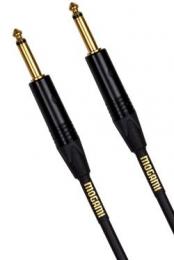
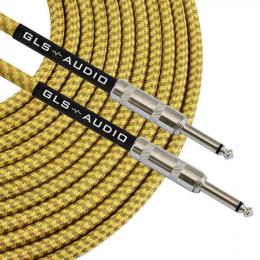
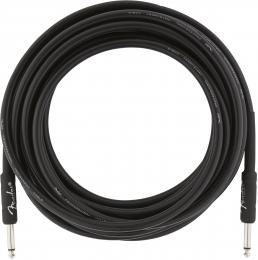
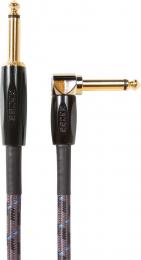
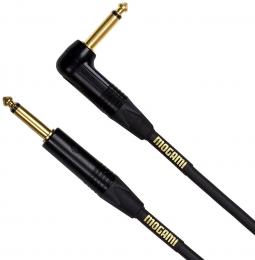

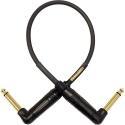
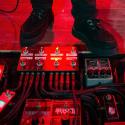
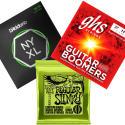
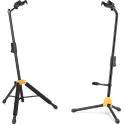
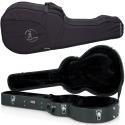
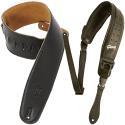
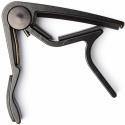
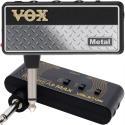
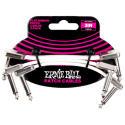
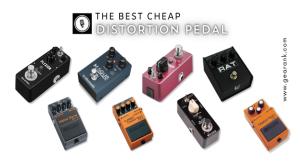
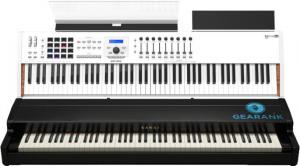
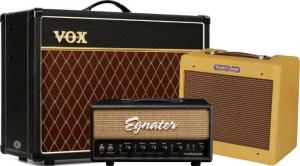
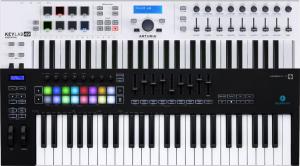
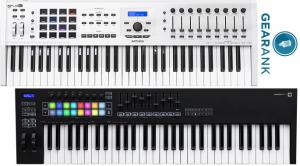
Comments
The following cables came off
Submitted by Jason Horton on
The following cables came off our recommended list above when we published the September 2022 Edition:
Publication of our October
Submitted by Jason Horton on
Publication of our October 2021 Edition resulted in the following cables coming off the recommended list above:
Our November 2020 update
Submitted by Jason Horton on
Our November 2020 update resulted in the following cables coming off our recommended list above, but you can still read our analysis of them:
Today we removed the
Submitted by Jason Horton on
Today we removed the following cable due to it being discontinued: Fender Performance Series Instrument Guitar Cable.
As a result of our October
Submitted by Jason Horton on
As a result of our October 2019 update the following cables came off the recommended list above, but you can still read our analysis of them:
Today we removed the
Submitted by Jason Horton on
Today we removed the following cable from the recommended list above due to a lack of availability: Monster Classic Coiled Instrument Guitar Cable .
There is a new model in the
Submitted by Anonymous (not verified) on
There is a new model in the market it seems
https://www.adorama...
https://www.zzounds...
I use Chord Company Cream
Submitted by Tone (not verified) on
I use Chord Company Cream Instrument cables a shielded twisted pair design rather than a coax design and are very happy I've changed to them.
Same here Tone. I began
Submitted by PINK FLAG (not verified) on
Same here Tone. I began using Cream Cable as a live Sound Engineer 12 years ago. I now use nothing else as they are exceptionally reliable. I've saved a lot of money by not replacing cables regularly.
I have been using Chord
Submitted by Robin Hoare (not verified) on
I have been using Chord Company Cream Instrument Cable for over 10 years. They sound exceptionally detailed and are very durable. I still use the original cables I bought over 10 years ago. They should be mentioned in my opinion.
They certainly should be
Submitted by PINK FLAG (not verified) on
They certainly should be mentioned, Robin. No Brand mystique, just fit for purpose. My job made easier. What a refreshing change.
If you move at all and looove
Submitted by Baggiewon (not verified) on
If you move at all and looove knotted cables by all means buy the braided ones.
I build my own using Beldon cable bought in bulk and Neutrik nys224g's.
Because $55 for a 10 ft cable is just insane.Monster makes, well, a monster cable for those solder impaired.
Sadly not enought cables are
Submitted by Kralls (not verified) on
Sadly not enough cables are viewed. Whatever the price, vovox, monsters, follow by high end klotz cables, are the best by a huge margin. However klotz ones seems a bit low shielded and edgy result due to low capacitance unlike monsters cut high frequency for same reasons. Hope you test some soon.
It has been shown that
Submitted by JB (not verified) on
It has been shown that capacitance is the only thing that alters tone in a cable. Everything else is sometimes subjective or for longevity, interference and various other external reasons.
It would be nice to see the Picofarads Per Foot on all these cables in the review. For example, the top rated cable is 38 Picofarads Per Foot. Even though they advertise that as "very low" is actually is not considered all that low in cables now in the digital world. Many cable makers have said 20-28 is a good place to start for guitar but everyone will hear differences dependent on their equipment used obviously. Nothing wrong with GLS cable, but did just want to point out that fact.
As a result of our January
Submitted by Jason Horton on
As a result of our January 2018 update, the following cables were removed from our recommended list:
Great breakdown! George L
Submitted by Matt (not verified) on
Great breakdown! George L makes some of the best guitar cables around! I'm surprised it didn't rank higher because the difference between George's cables and the Hosa at the top of the list is night and day!
George L guitar cables tend
Submitted by Jason Horton on
George L guitar cables tend to polarize people, many good guitarists swear by them while others say they don't offer enough extra value to justify the higher prices.
BTW - the list is sorted by price so Hosa isn't at the 'top of the list' in terms of its ratings.